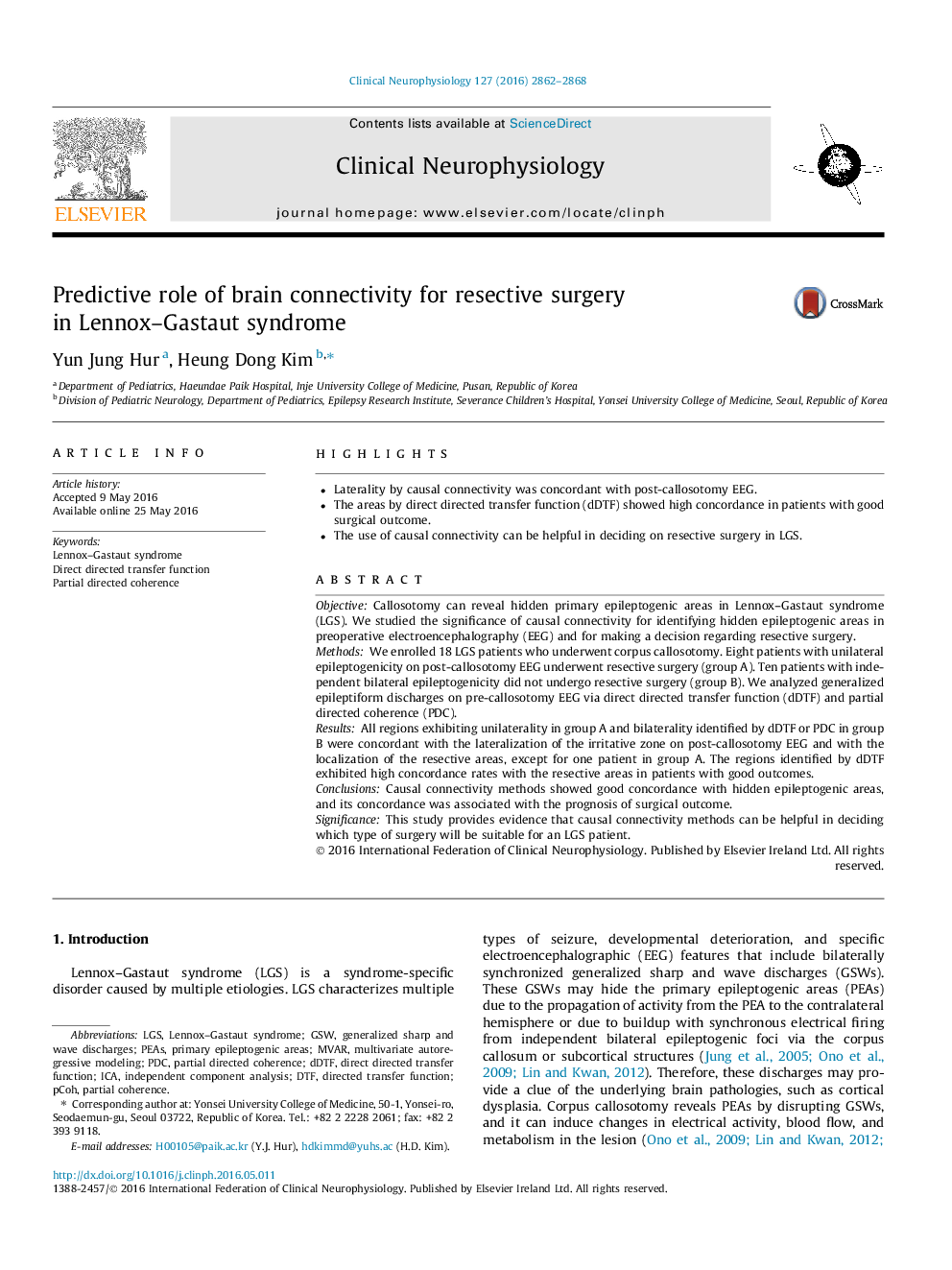| Article ID | Journal | Published Year | Pages | File Type |
|---|---|---|---|---|
| 3042656 | Clinical Neurophysiology | 2016 | 7 Pages |
•Laterality by causal connectivity was concordant with post-callosotomy EEG.•The areas by direct directed transfer function (dDTF) showed high concordance in patients with good surgical outcome.•The use of causal connectivity can be helpful in deciding on resective surgery in LGS.
ObjectiveCallosotomy can reveal hidden primary epileptogenic areas in Lennox–Gastaut syndrome (LGS). We studied the significance of causal connectivity for identifying hidden epileptogenic areas in preoperative electroencephalography (EEG) and for making a decision regarding resective surgery.MethodsWe enrolled 18 LGS patients who underwent corpus callosotomy. Eight patients with unilateral epileptogenicity on post-callosotomy EEG underwent resective surgery (group A). Ten patients with independent bilateral epileptogenicity did not undergo resective surgery (group B). We analyzed generalized epileptiform discharges on pre-callosotomy EEG via direct directed transfer function (dDTF) and partial directed coherence (PDC).ResultsAll regions exhibiting unilaterality in group A and bilaterality identified by dDTF or PDC in group B were concordant with the lateralization of the irritative zone on post-callosotomy EEG and with the localization of the resective areas, except for one patient in group A. The regions identified by dDTF exhibited high concordance rates with the resective areas in patients with good outcomes.ConclusionsCausal connectivity methods showed good concordance with hidden epileptogenic areas, and its concordance was associated with the prognosis of surgical outcome.SignificanceThis study provides evidence that causal connectivity methods can be helpful in deciding which type of surgery will be suitable for an LGS patient.
